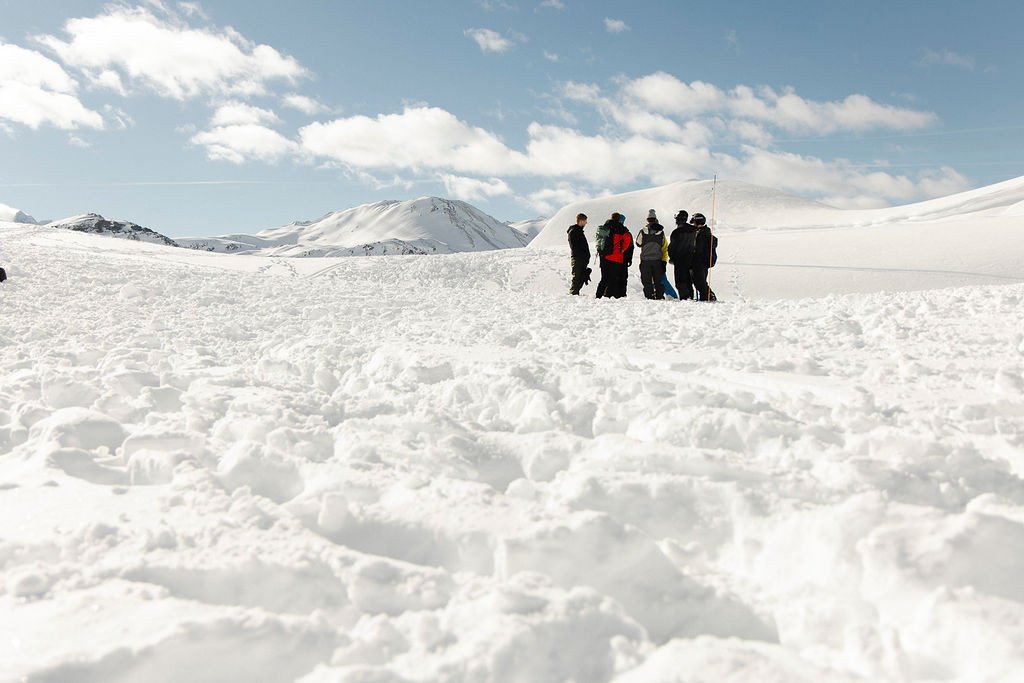After two warm-up runs, we set up camp in the terrain next to the Arlenmähderbahn piste and put our skis and snowboards to one side for the time being. The first topic of the day is the function and importance of a 3-antenna avalanche transceiver. On some avalanche transceivers, the antennas are visible through the housing: two slightly larger antennas on the x- and y-axis and a smaller one for the z-axis. In transmit mode, there is no difference between the 2- and 3-antenna devices, as only the longest antenna transmits on the x-axis. In search mode, however, there is: the two horizontal antennas search for the signal in the respective direction and the third antenna determines the exact point location. This means that the third antenna is essential for exact localisation, regardless of the depth of the transmitter and the position of the buried person. This saves crucial time in the detailed search (probing and shovelling). This means, as soon as you go into the terrain: ONLY with a 3-antenna avalanche transceiver.
After the short theory input, the course gets active again: teams search for three buried avalanche transceivers (transmitters). First a signal is searched for, then the rough search begins, at a distance of approx. 50 metres you follow the arrows on the screen of the avalanche transceiver in quick steps and get closer and closer to the buried transmitter along the frequency lines. As soon as the number on the screen increases, turn 180 degrees and try the other direction, then the number should decrease again and at a distance of 10 metres from the buried transmitter the steps should slow down. At a distance of around two to three metres, the avalanche transceiver is placed on the snow surface and the fine search begins: as soon as the smallest signal has been located, the point is marked using a shovel or similar. After three signals have been found, there is internal feedback: what is working well, where are there difficulties, what should be done faster?
It is important that the probe is plunged into the snow DIRECTLY next to the shovel at a 90 degree angle to the slope. At a distance of 20 to 25 cm, probe in the shape of a snail shell - use the metre markings on the probe for this - and the body follows the probe. There are different types of probe: It doesn't matter which one you choose, the main thing is that you have a system! By probing different objects such as skis, backpacks or snow, we get a feel for how to probe correctly and the homework for this is also: practise, practise, practise. As soon as the probe encounters resistance, which is clearly a person/equipment, we start shovelling.
When shovelling, it is not speed that is decisive, but technique: as soon as there are several searchers, one person on the probe shovels vertically towards the ground, the second and third person either shovel the snow away as in a triangle, or the people form a chain one behind the other. However, the shovel position at the tip of the triangle, directly by the probe, must be alternated in all variations in order to save time and energy.
Rough search, fine search, marking, probing, shovelling and then?













